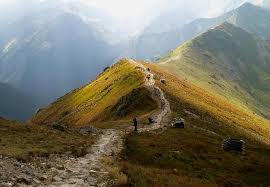 The Yogabliss, Two Rivers/RiverTree Yoga on-line Moving into Meditation classes met this morning. For me, this week’s moving series of inaugural events began with the 400 lights around the Lincoln Memorial Reflection Pool. We carry the past year’s losses of so many into the days ahead. Amanda Gorman’s lyrical recitation of The Hill We Climb lifted my spirits. Her yellow coat seemed to glow with her dancing hands and singing voice. She made me so happy. She inspired our practice today.
The Yogabliss, Two Rivers/RiverTree Yoga on-line Moving into Meditation classes met this morning. For me, this week’s moving series of inaugural events began with the 400 lights around the Lincoln Memorial Reflection Pool. We carry the past year’s losses of so many into the days ahead. Amanda Gorman’s lyrical recitation of The Hill We Climb lifted my spirits. Her yellow coat seemed to glow with her dancing hands and singing voice. She made me so happy. She inspired our practice today.
We also drew on the Alnoor Ladha’s powerful essay, What is Solidarity? Alnoor rights regularly for the Kosmos Journal for global transformation. He is part of a global network of activists, organizers, researchers and writers focusing on changing the rules that create inequality, poverty and climate change.
We also heard Richard Wehrman’s poem, We Are Still Living. Richard is a designer, illustrator poet and long time Dharma student.
Relaxed Reflection
Here we are sitting together. We are sharing the experience of solidarity . . . unity in diversity . . . In solidarity we deeply care for the well being of ourselves and others. In solidarity we bring ourselves to the loving work of creating Dr. Martin Luther King’s Beloved Community.
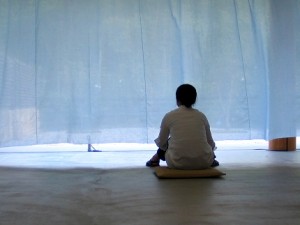 Meditation is a practice. It takes discipline and effort and especially a willingness of the heart. We try over and over again to follow the simplest and yet most challenging instructions: to follow the breath, to feel sensation in the body, to recognize thought as thought and emotion as emotion. We don’t practice to become great meditators. We practice to cultivate compassion and peace within ourselves and our world. We practice to meet adversity, injustice and our own difficult emotions with grace.
Meditation is a practice. It takes discipline and effort and especially a willingness of the heart. We try over and over again to follow the simplest and yet most challenging instructions: to follow the breath, to feel sensation in the body, to recognize thought as thought and emotion as emotion. We don’t practice to become great meditators. We practice to cultivate compassion and peace within ourselves and our world. We practice to meet adversity, injustice and our own difficult emotions with grace.
This week we witnessed a beautiful young woman, Amanda Gorman, encouraging us to engage in solidarity so we might create build Beloved Community.
From The Hill We Climb:
We are striving to forge a union with purpose
To compose a country committed to all cultures, colors, characters and
conditions of man
And so we lift our gazes not to what stands between us
but what stands before us
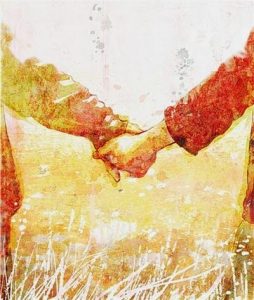 We close the divide because we know, to put our future first,
We close the divide because we know, to put our future first,
we must first put our differences aside
We lay down our arms
so we can reach out our arms
to one another
We seek harm to none and harmony for all
We can take a moment or two to reflect on unity . . . unity within and also unity without. Can we embrace those fragmented parts of ourselves that we judge or hide in shadow? Can we see through our conditioning to accept another’s difference? How is it that we can recognize the nature of our own minds . . . the distortions in the lens with which we are seeing? This gradual recognition is enabled by our most powerful ally in spiritual practice: our body.
Below the noise of the world, our emotions our thoughts, we feel Body’s rhythms. In stillness we encounter Body’s time. Right now. . . . The breath is breathing . . . ears are hearing . . . eyes are seeing . . . soft and hard tissues perceiving pressure and temperature and texture. . . . Gradually we experience a field of energy . . . inner light and vibration . . . continuously changing and yet ever present, we have a grounded and stable friend. Our friendship deepens as we slow down, as we attend to what’s happening right here, right now . . . in “Bodyfulness” life is revealed . . . all parts belong and form a seamless whole . . .
In the slowness of “Bodytime” we realize – each of us reflects the truth of a greater whole that we compose with “all cultures, colors, characters and conditions of man.” Every life yearns to flourish . . . grows toward the light . . . suffers . . . rejoices . . . From the Hill We Climb:
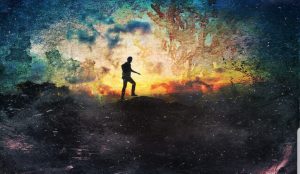 Let the globe, if nothing else, say this is true:
Let the globe, if nothing else, say this is true:
That even as we grieved, we grew
That even as we hurt, we hoped
That even as we tired, we tried
That we’ll forever be tied together, victorious
Not because we will never again know defeat
but because we will never again sow division
We grieve and grow . . . we tire and try . . . we are tied together. We come to know this with our body’s intelligence, our hearts wisdom this certainty:
If we merge mercy with might,
and might with right,
then love becomes our legacy
and change our children’s birthright
So let us leave behind a country
better than the one we were left with
We are willing because we are here. Each of us has hills to climb. We bring our bodies, hearts and minds . . .We bring our loving awareness to the hills we climb alone and the hills we climb together . . . We wake we rise to “rebuild, reconcile and recover” every day. We begin again. We rise again.
 As we relax our bodies onto the earth . . . we can feel weight settling . . . time slowing . . . there is a softening of tissues around bone . . . there is a filling and emptying of breath drawing the outside in and releasing the inside out . . . there is a rhythmic pulsation of life force circulating through inner rivers . . . so many parts of ourselves form our integrated whole Body . . . a kind of solidarity of one . . . only kept alive in solidarity with the world around us.
As we relax our bodies onto the earth . . . we can feel weight settling . . . time slowing . . . there is a softening of tissues around bone . . . there is a filling and emptying of breath drawing the outside in and releasing the inside out . . . there is a rhythmic pulsation of life force circulating through inner rivers . . . so many parts of ourselves form our integrated whole Body . . . a kind of solidarity of one . . . only kept alive in solidarity with the world around us.
In his book, Spell of the Sensuous, David Abram
Solidarity is not a concept; it is an active, embodied practice. . . .To define another being as an inert or passive object is to deny its ability to actively engage us and to provoke our senses; we thus block our perceptual reciprocity with that being. By . . . defining the surrounding world as a . . . set of objects, we cut our conscious, speaking selves off from the spontaneous life of our sensing bodies.
How do we embody solidarity? In our practice of “Bodyfulness” we bring loving awareness to all parts of ourselves and to the wholeness of ourselves . . . nothing left out . . . We become intimate with our world by mindfully breathing in . . . breathing out . . . We draw the world inside us . . . the breath of the trees becomes our breath . . . our breath becomes tree breath . . . With our hearts’ wisdom we recognize our interdependence . . .
In his essay, What is Solidarity, Alnoor Ladha, writes:
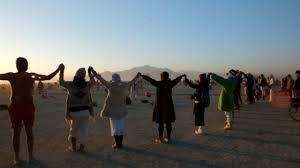 As we create intimacy with ideas such as solidarity, empathy, [and] interdependence . . . , we refine our internal world, the felt experience of what it is to be a self-reflective, communitarian being in service to life. . . . We carry the scars of history in our bodies, physically, genetically, [and] epi-genetically . . . .. . . As we start to become practitioners of solidarity, we might find that our humanity expands as our conceptions of identity expand. . . . We may find that solidarity as embodied practice is where true meaning and integrity comes from. . . we can also start to see glimpses of how all healing is connected. And that our own liberation is not only bound up with that of others but that our collective future is dependent on it. Solidarity is not an act of charity, rather it is a means of making us whole again.
As we create intimacy with ideas such as solidarity, empathy, [and] interdependence . . . , we refine our internal world, the felt experience of what it is to be a self-reflective, communitarian being in service to life. . . . We carry the scars of history in our bodies, physically, genetically, [and] epi-genetically . . . .. . . As we start to become practitioners of solidarity, we might find that our humanity expands as our conceptions of identity expand. . . . We may find that solidarity as embodied practice is where true meaning and integrity comes from. . . we can also start to see glimpses of how all healing is connected. And that our own liberation is not only bound up with that of others but that our collective future is dependent on it. Solidarity is not an act of charity, rather it is a means of making us whole again.
Ram Dass described:
The world is perfect as it is, including my desire to change it. . . . being in service to others is being in service to one’s self. The act of solidarity for another being or community of beings feeds the soul and cultivates character in ways that often cannot happen through traditional spiritual practices.
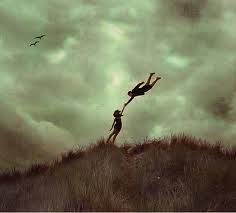 When we come together in circle . . . we reflect on our inner experience and we contemplate what other beings are going through . . . we experience empathy and cultivate loving kindness. In this way Alnoor Ladha says that “we access the possibility to live many lives, to see many perspectives, to hear many tongues, to know many ancestors, to receive the blessings of many . . . “ All of us have imagined the challenges of caregivers and essential workers . . . we have grieved the loss of so many and so much. These words by poet Richard Wehrman remind us:
When we come together in circle . . . we reflect on our inner experience and we contemplate what other beings are going through . . . we experience empathy and cultivate loving kindness. In this way Alnoor Ladha says that “we access the possibility to live many lives, to see many perspectives, to hear many tongues, to know many ancestors, to receive the blessings of many . . . “ All of us have imagined the challenges of caregivers and essential workers . . . we have grieved the loss of so many and so much. These words by poet Richard Wehrman remind us:
We are living now
our regrets and our failures,
the ache of what we
wish could be again,
now while we have it.
We are living now
with the ghosts of those
we love, in their corporality,
while they have bodies
of flesh, their desires ahead
rather than behind.
We are living now with
the opportunities to change,
to make amends, to
kiss the preciousness
which life has placed here
in our hands.
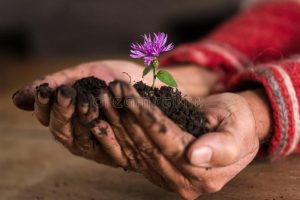 We are living now
We are living now
with what we still may
become, with what we are
as we hold our hands
before us in the sunlight.
We are living now
with all we have lost,
that will never come again,
that our tears wash
in the desire to hold one
more time, now, while
in this moment they are ours.
